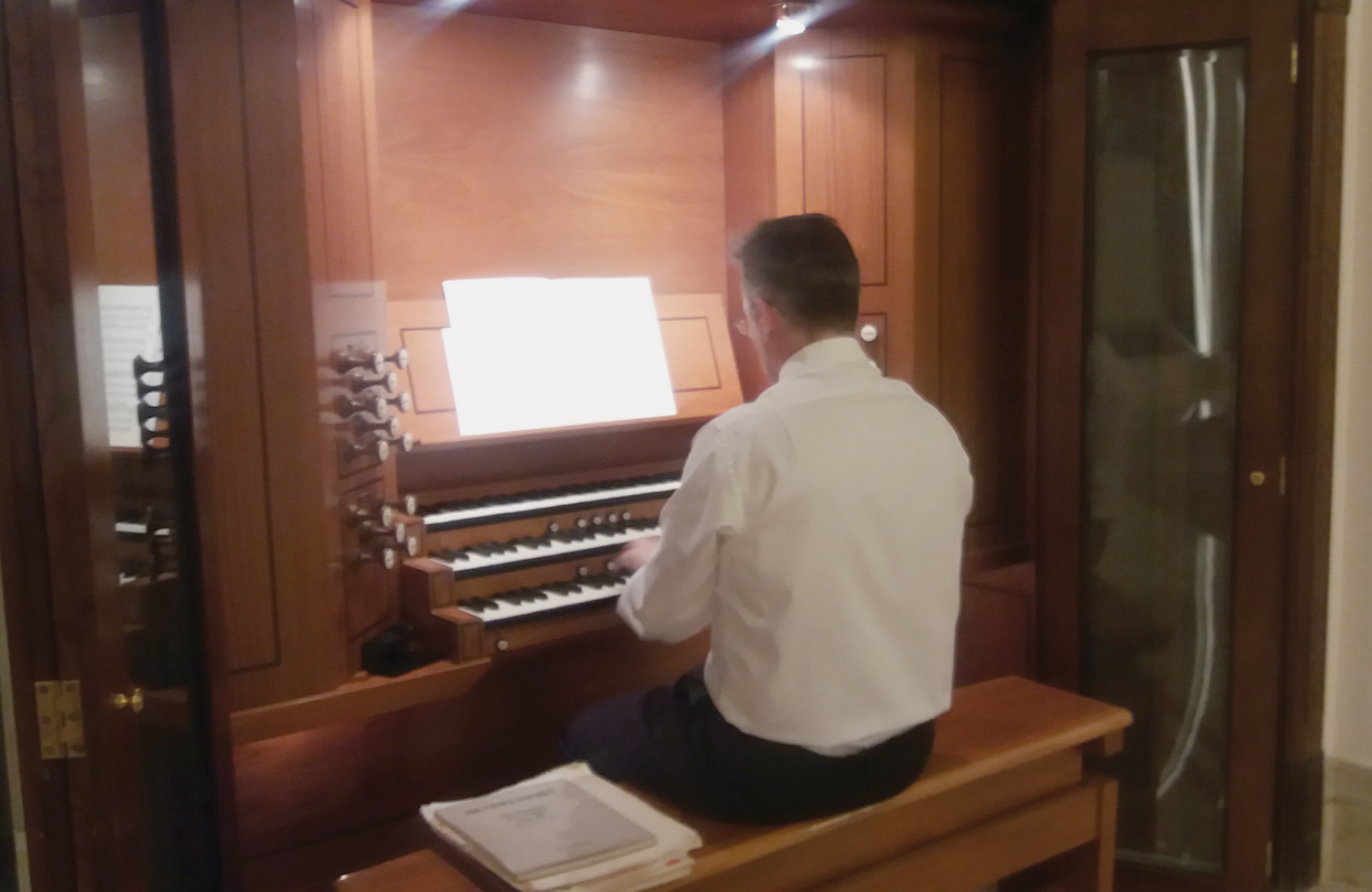

Not many people know that tucked away in the Ballroom of the Al Bustan Palace Hotel is Oman’s oldest pipe organ. Small but perfectly formed, the instrument was commissioned from NP Mander of London to entertain guests at the 1985 GCC Summit. Nowadays it is dwarfed by the huge German Klais at the Royal Opera House, Muscat, but this instrument is occasionally given an airing. One regular event is the annual wintertime ‘Festive Organ Recital’ on December 26 and the performer is usually Organist and keyboard coordinator at the Royal Oman Symphony Orchestra, Mr. Ian Hockley. Around ninety people drove down to the Al Bustan Palace — a Ritz-Carlton Hotel in the early evening on Wednesday to warm up with cups of tea and coffee before the 5pm kick off for this informal, free festive programme.
Seated in an intimate semi-circle around the three-manual instrument, Ian opened the proceedings with a fiery performance of French Romantic organist and composer, Alexandre Guilmant’s, ‘Scherzo Symphonique’ opus 44. It was an unfamiliar piece of orchestral proportions, exploring all the timbres the organ offered, from subtle soft voices to full trumpet stops.
The second piece was the iconic ‘Toccata and Fugue in D minor’ by JS Bach, a much-loved and requested tour-de-force in any organ recital, and this was no exception. Hockley’s flawless interpretation of the counterpoint began with the fugue theme on the pedals, moving to full brass sound when all the stops were out, with a concluding return to the pedal theme at the end. More Bach followed in his 1731 Cantata, ‘Wachet auf, ruft uns die Stimme’, based on Philipp Nicolai’s 1599 Lutheran hymn and more popularly known as ‘Sleepers Awake’. It was Christmassy, opening with virtuoso lines for right hand and feet, with the left hand only joining occasionally. The sound-world was curiously anachronistic, with “crumhorn” stops sounding like a little choir of clarinets.

The most fascinating and arresting piece of the evening was Felix Mendelssohn’s two-movement, ‘Sonata in A major’, written for his sister Fanny’s wedding and not nearly well known enough. Mendelssohn initiated a revival in interest in Bach’s keyboard works in the 19th century and so it took an appropriate position in the programme. It opened in full-throttle for the ‘Allegro Maestoso’ March, and then moved to a delicate chromatic section with tranquil flute effects in the ‘Andante’. It developed into rousing, rich romantic harmony with scalic pedal passages and lush textured chords, expressing the full gambit of organ colours and techniques. Suddenly the quiet, hymn-like qualities of Bach counterpoint returned to end the piece — with a surprising vibrato effect.
The interval brought the opportunity to discuss the music over more tea and biscuits, and Part Two brought a lighter seasonal element, predominantly from the baroque period. Corelli’s ‘Pastorale’ from his “Christmas Concerto”, a gentle dialogue between manuals in a lilting 12/8 rhythm, conjured up pictures of a rural Italian landscape. Also in seasonal 12/8 mood, Franz Liszt’s arrangement of ‘In Dulci Jubilo’ used light flute stops, most untypical of Liszt’s usually flamboyant language, and ended with a celestial vibrato effect — explained by Hockley as the unusually wide tremulant on the Mander instrument.
Delightfully English, Henry Purcell’s bright 17th century fanfare in ‘Trumpet Tune and Almand’, contrasted with the gentle arrangement by Robert Gower of Howard Blake’s 20th century, ‘Walking in the Air’ from “ The Snowman”. The favourite winter song worked well on organ using the lighter voices juxtaposed with strong, brighter effects. The children were literally dancing on the refurbished ballroom carpet.
Georgina Benison
Oman Observer is now on the WhatsApp channel. Click here



